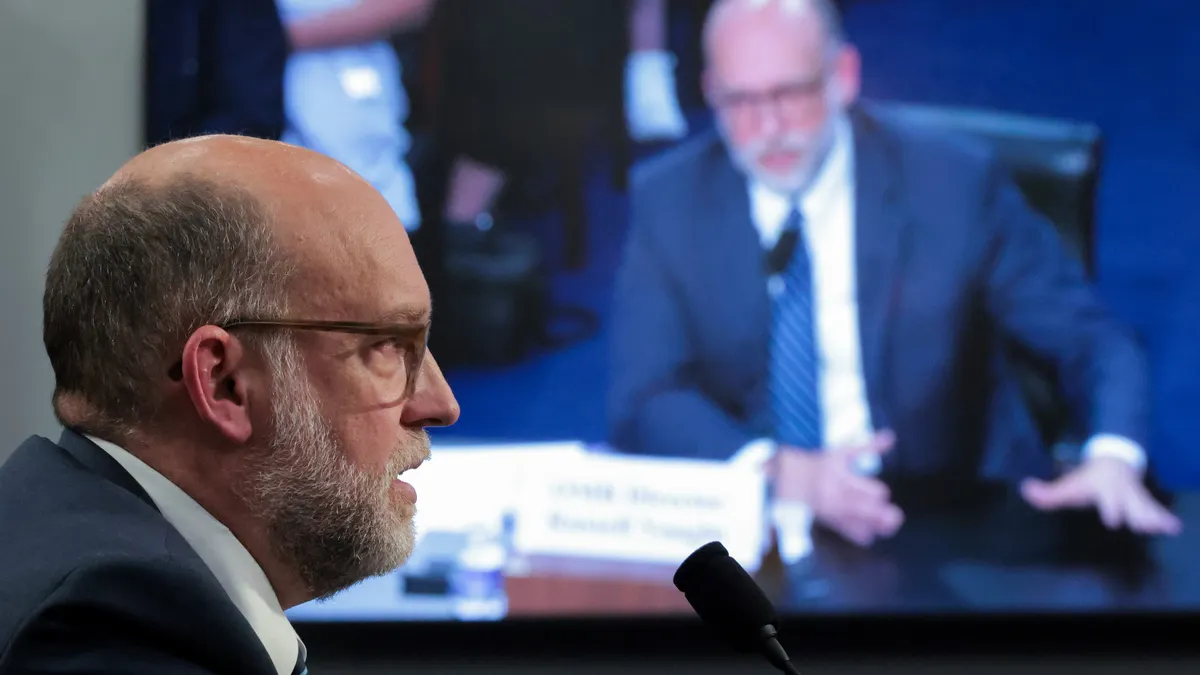BNY’s board on Thursday named CEO Robin Vince as its next chair, effective Sept. 1.
The bank’s current chair, Joe Echevarria, will become lead independent director at the same time.
The move means six of the U.S.’s eight global systemically important financial institutions have consolidated their CEO and board chair roles.
"Since stepping into his role almost three years ago, Robin has demonstrated why the Board chose him as CEO,” Echevarria said in a statement Thursday. “He has a rigorous approach to strategy and execution, along with an unwavering dedication to serving clients and creating value for shareholders."
Vince joined BNY as vice chair in October 2020 – after 26 years at Goldman Sachs, including as treasurer and chief risk officer, according to his LinkedIn profile. He ascended to CEO in September 2022.
“BNY has always been an extraordinary place, and I’m deeply grateful and humbled to have the opportunity to steward the firm through its latest chapter of transformation,” Vince said last week in a post on LinkedIn. “We are … creating a more connected, high-performing culture, evolving our operating model to run our company better and through these critical steps, reimagining how we serve our clients.”
Under Vince, the nation’s oldest bank has embraced crypto, streamlined its management structure and rebranded itself.
In his LinkedIn post, Vince also noted the timing of the announcement – during the bank’s “Founder’s Week.” (Bank of New York opened June 9, 1784.)
“It is a moment for us to acknowledge our incredibly rich history while feeling the liberation of knowing anything is possible, with open horizons in front of us,” Vince said Thursday.
The consolidation of CEO and chair roles, however, generally hasn’t found favor among proxy advisers. Glass Lewis and Institutional Shareholder Services, for example, have frequently recommended that bank shareholders vote to separate the positions.
ISS last year, for example, argued “the size and complexity of JPMorgan,” where Jamie Dimon serves as both CEO and chair, “suggests that it is difficult for any one person to run both the company and the board.”
JPMorgan countered, however, that ISS’s recommendation “fails to match the empirical evidence of the last 18 years of leadership by the current Chairman and CEO that has seen the Firm become the largest U.S. bank, outperforming our peers including those with independent chairs.”
The bank added that a consolidated CEO-chair role for Dimon “best serves the Firm and its shareholders as it focuses on enabling an orderly CEO transition to take place in the medium term.”
The ISS-backed proposal received support from 42.7% of JPMorgan shareholders. ISS and Glass Lewis also last year recommended decoupling the CEO and chair roles at Goldman Sachs and Bank of America – where David Solomon and Brian Moynihan, respectively, hold both positions.
About 33% of Goldman shareholders voted to separate the roles, while 31% of Bank of America shareholders did. Those percentages, however, jumped from 16% at Goldman and 26% at BofA a year earlier. Both banks have maintained that the lead independent directors they have appointed ensure robust oversight.
For BNY, Echevarria’s move to lead independent director marks a return to the role. He had served as the bank’s lead independent director from 2016 to 2019, when Charlie Scharf – now CEO at Wells Fargo – led BNY as CEO and chair. Notably, Wells Fargo is one of the two U.S.-based global SIFIs – along with Citi – that separate their CEO and chair roles.
Echevarria chaired the board while Todd Gibbons led the bank – first as interim CEO, then permanently – and through the first three years of Vince’s time as chief executive.
BNY is not the only U.S.-based global SIFI to consolidate its CEO and chair roles this year. Morgan Stanley CEO Ted Pick also began serving as the bank’s chair as of Jan. 1. The bank had long operated with James Gorman in both roles. But during Pick’s first year succeeding Gorman as CEO, Gorman held onto the chair role.





















